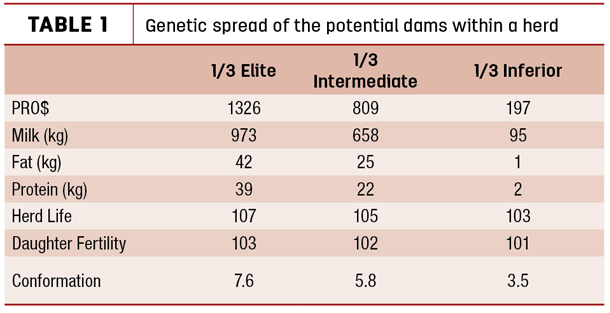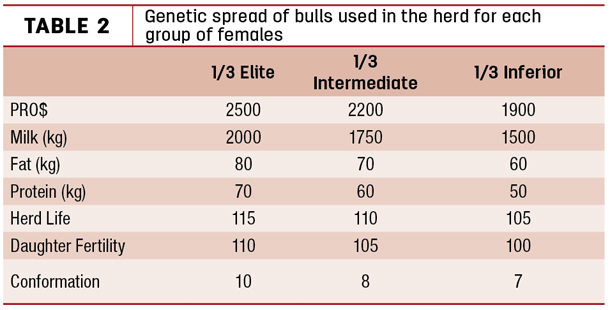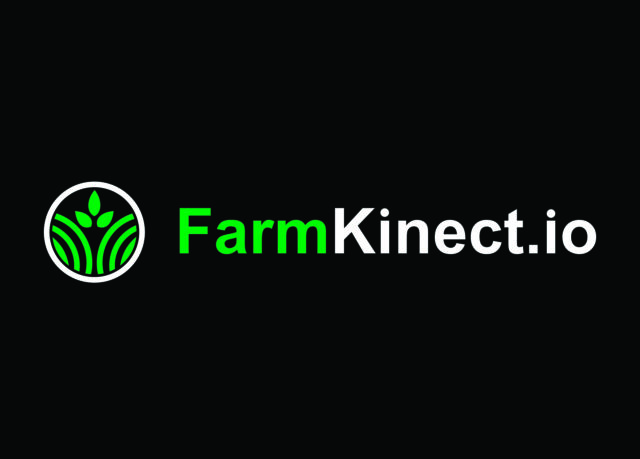More often than not, dairy producers overlook the possibility of introducing sexed semen as part of their genetic strategy. In August 2015, the Canadian Dairy Network (CDN) introduced an economic index to estimate profit related to genetics called Pro$, a powerful tool that also provides an opportunity to calculate the economic impact of using sexed semen in a breeding program.
Pro$: An important index to select cattle based on direct profit
The Pro$ Index was created from a large Canadian database comprising direct profit data on 700,000 6-year-old dairy cows computed by Valacta and CanWest DHI. The index best helps increase profits when dairy producers carefully select sires based on their Pro$ rating.
For example, in 2015, the seven best Pro$ bulls had an average of $2,735 for that trait, while the seven most popular genomic bulls sold the same year averaged $2,060 on that trait.
A producer raising 60 heifers per year and using the best Pro$ bulls will generate $40,500 more profit over six years than he would using the most popular genomic bulls ($2,735 - $2,060 = $675 x 60 = $40,500) for this very generation alone.
Female selection: A crucial step
Many producers focus their selection attention on sires without giving as much thought to their choice of dams. However, variance of female genetic potential within a herd can be greater than that noted among the very elite genomic bulls most often used in A.I.
In April 2016, the 400 best genomic bulls for Pro$, published by CDN, showed a variation of $569, while at the same time producers often saw a variation of more than $1,000 between active females in a given herd.
Producers must use all of the analytical tools available to identify the females best suited to create the next generation. Genomic testing is an excellent way to increase the reliability of genetic traits by 20 to 30 percent.
Genomics have the potential to more accurately rank females within a herd and identify the animals that will help accelerate a herd’s genetic gains.
Sexed semen usage: The proliferation of your best animals twice as fast
Once the best females for Pro$ have been identified, the next step is to optimize their ability to transmit their superior genetics to female offspring by using sexed semen.
Today’s sexed semen is consistently more than 90 percent pure for X-chromosome- (female) bearing sperm cells, giving producers better than a 9-out-of-10 probability of producing heifer calves from the best females.
To measure sexed semen usage economic impact, Table 1 shows genetic data of an existing herd, divided in three groups of females according to genetic potential.

Genetic variation within this herd is vast, particularly for Pro$, which demonstrates that the “elite group” will generate heifers expected to make $1,129 ($1,326 - $197 = $1,129) more profit within a six-year period than the females in the “inferior group.”
Table 2 shows bulls used in conventional semen within each female group and from which the producer wants to raise all females.

If this producer would use sexed semen in the elite group instead of inseminating all groups with conventional semen, he would increase significantly the number of heifers out of his best females and would not need to raise calves from the lower-genetic-potential group.
Table 3 shows current genetic herd average compared with the next-generation genetic potential according to the conventional semen utilization scenario and sexed semen utilization scenario.

Table 3 also shows the increase of resulting heifer calves out of the elite group and the rejection of the females out of the inferior group that positively and significantly impact the potential genetic level of the next generation in the sexed semen scenario. The Pro$ variation between the two scenarios is $278 towards the sexed semen option.
That means if a producer is raising 60 heifers per year, he could expect an increase in profit directly related to genetics of up to $33,360 ($278 x 60 females x 2 = $33,360) for this one and only generation while using elite bulls for Pro$ available in sexed semen on his elite females in his herd.
Genetic and economic gains can be further increased if the producer owns one, or a few, elite females that show substantial genetic merit over the rest of the herd through using in vitro or conventional flushing and preferably with sexed semen to maximize the herd’s female assets.
What should we do with the inferior group?
Genetically inferior females excluded from the breeding strategy to produce the next generation should be bred to high-fertility and calving-ease bulls or even be eliminated from the herd.
It is generally accepted that selected Angus bulls can achieve high conception rates and sire calving ease, making them a worthy option to breed to the inferior group. Therefore, if we assume that Angus male calves are globally more valued, then the utilization of male sexed Angus semen can be considered. ![]()
PHOTO 1: Using sexed semen on the best females in the herd leads to important genetic and economic gains. Photo by Frank Robinson.

-
Dany Plourde
- Genetic Program Manager
- STgenetics Canada
- Email Dany Plourde










